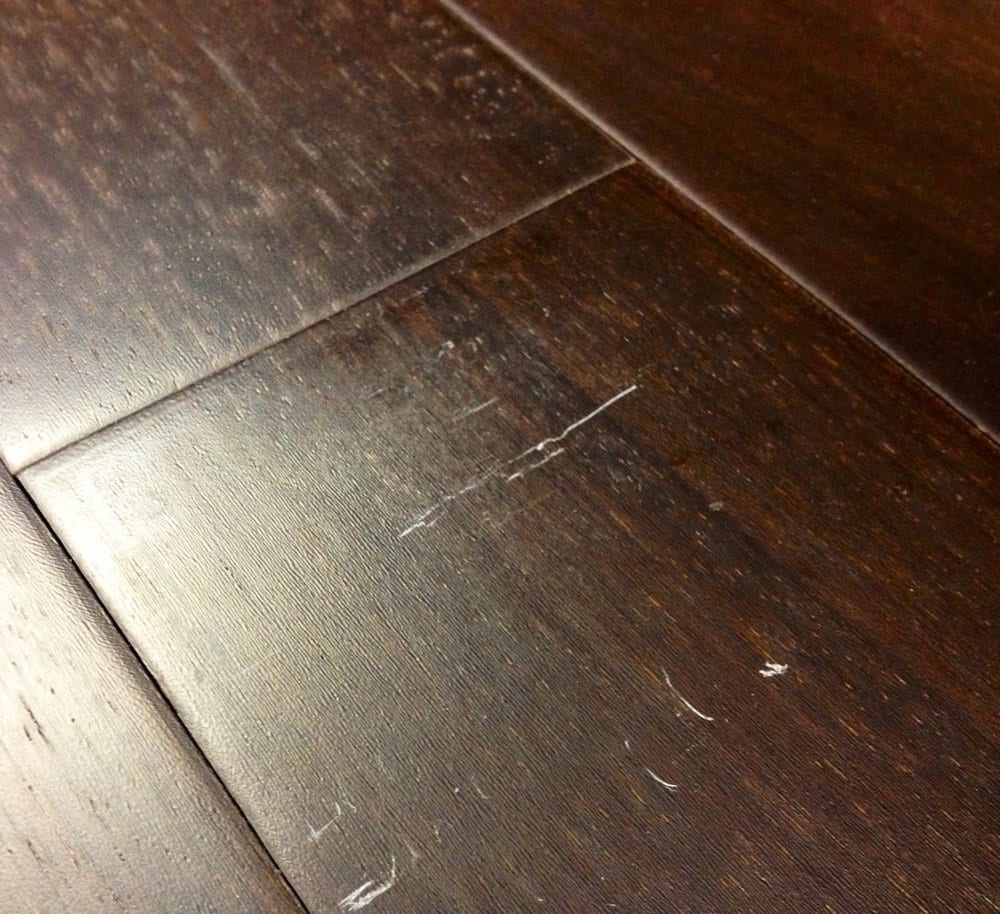
First let’s clear up a common misconception between wood stain and wood finish. Wood stain simply refers to a color element, typically liquid, that is applied to the wood that dyes the wood a particular color. It offers no protective quality for your wood flooring. However wood finish protects a floor from damage by providing a “shield” on the top layer. In addition it can also alter the color of the wood.
Now that we know the difference between staining and finishing, which finish is the best for your application?
Most common are urethane finishes. Whether site finished or shop applied (prefinished), urethane finishes are the most durable. The most common prefinished floors in the marketplace today have an Aluminum Oxide (urethane) finish. Aluminum Oxide urethane floors are extremely scratch resistant and durable yet they do have a downside. First, they are difficult to recoat because the finish is so hard. In contrast, two coats of a field applied water-based polyurethane offer similar durability yet allows the floor to be recoated more easily.

It is important to note that recoating a urethane floor as needed is necessary and helps to increase the overall lifecycle of the floor. Urethane finished floors look the best the day they are installed and continue to get scratched, scuffed and worn over time until you have to be recoated or refinished. Damage to a urethane floor is easily identifiable by the “white” scratches on the finish (see image). Since you are walking on the urethane finish rather than the wood, more often than not the damage is contained to the finish. However in order to fix the finish, you must remove all furniture from the space to apply an even uniform fresh coat of finish.
Oil finishes have increased in popularity over the years mainly due to a movement towards low sheens and more natural aesthetics. Oil finished floors are excellent for bringing out the natural beauty of your selected wood specie. While not as durable as a urethane finish, they do offer greater flexibility in repairing any damage.
A noticeable difference regarding oil finishes on floors is that you are walking on the wood surface versus a plastic-like film on most urethanes. When scratches occur on oiled floors, you can buff and blend them away very easily without removing the furnishings. Because of the flexibility to repair damages on oiled floors, if you are working with a client that does a lot of entertaining, an oiled floor is an excellent selection as it is easy to return the floor to pristine condition.
Maintenance is another key in extending the product life cycle of your wood floor. Urethane and oiled floors are maintained in different ways. When specifying the finish type, please be mindful of whether or not regular cleaning and maintenance will be a priority with the owner.
A urethane floor finish should be DRY MOPPED AND VACUUMED. Seldom will it ever be damped mopped. With excessive damp mopping, it is possible for contaminants to create a haze on the finish. Additionally, these contaminants may present adhesion issues when it becomes time to recoat.
In contrast, oil floor finishes may be damp mopped with a soap and water solution. Working on a restaurant project? We would highly recommend an oil finish because it can be damp mopped as well as the flexibility in “refreshing” the floors without major disruption to business.
In conclusion, each finish type has its’ downside. It is important to know how the floor will be used, maintained and cleaned to ensure that you are specifying the correct floor finish for your project.
Cheers till next time!
